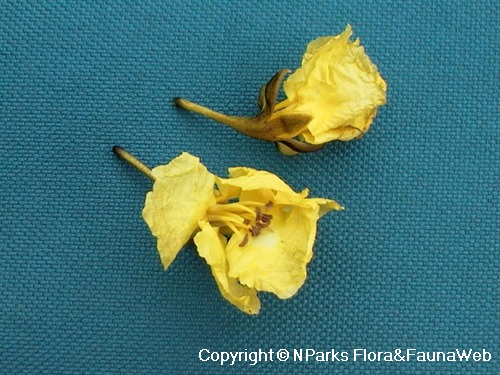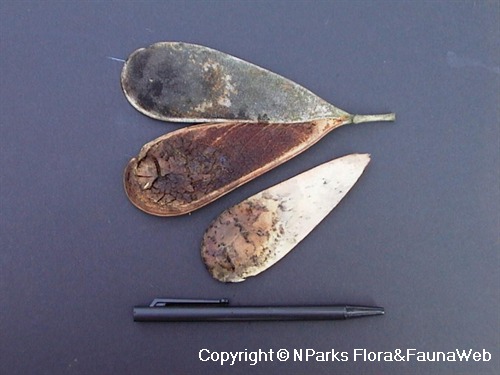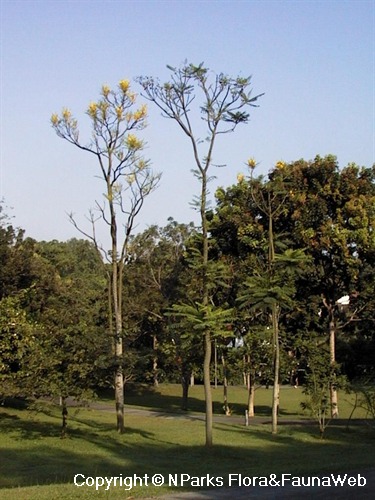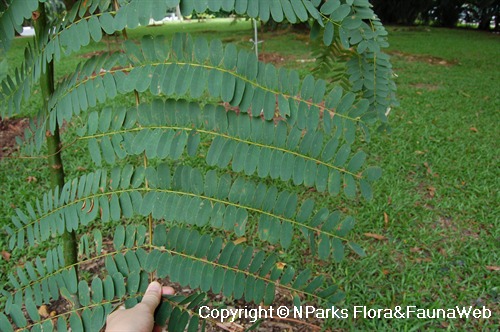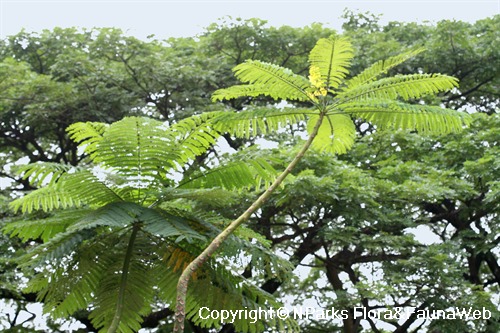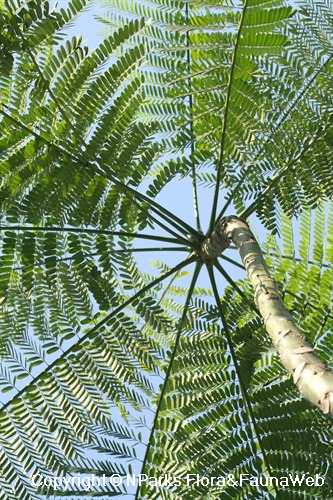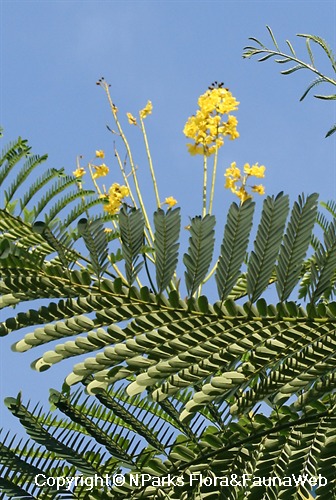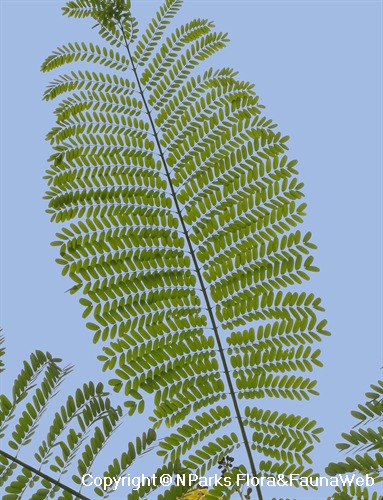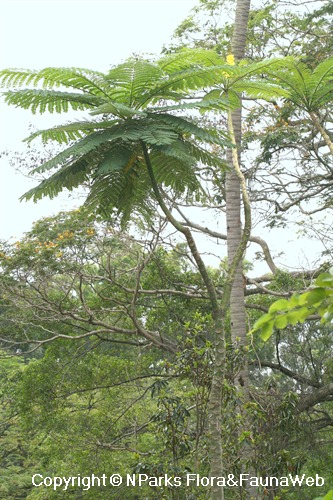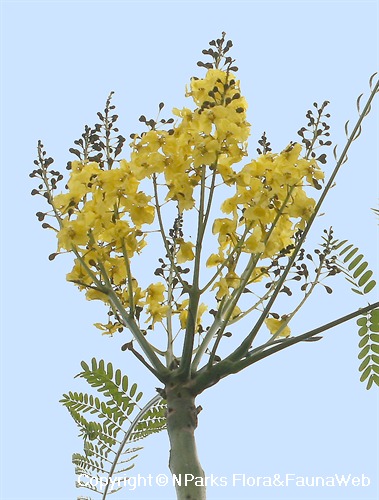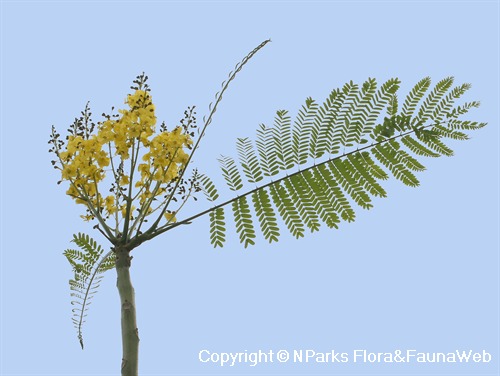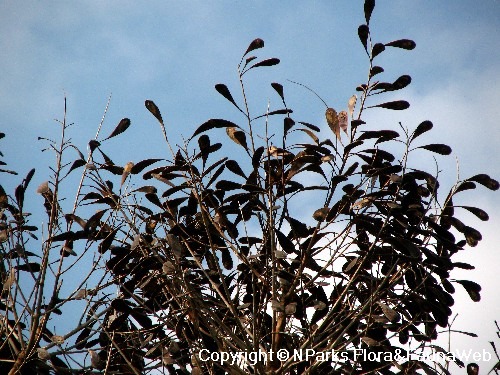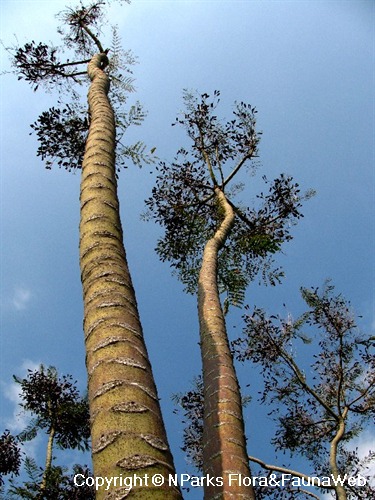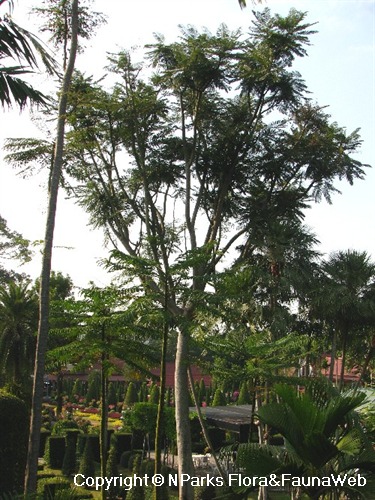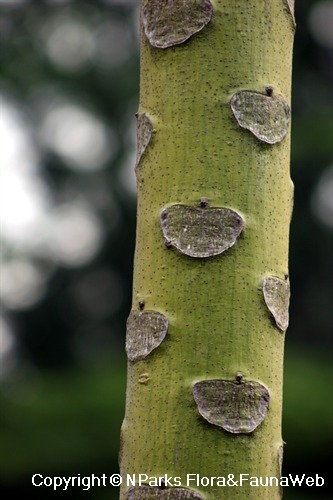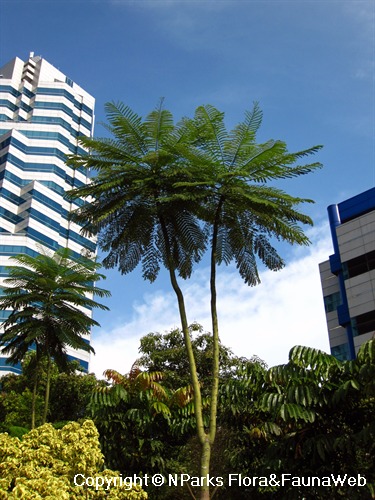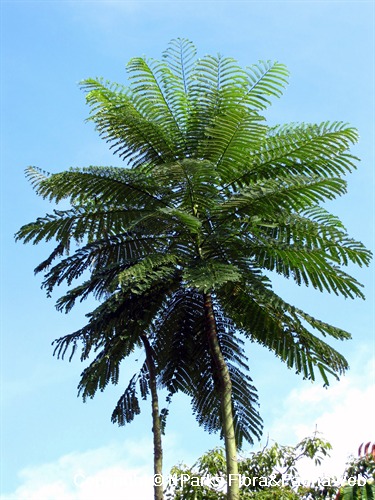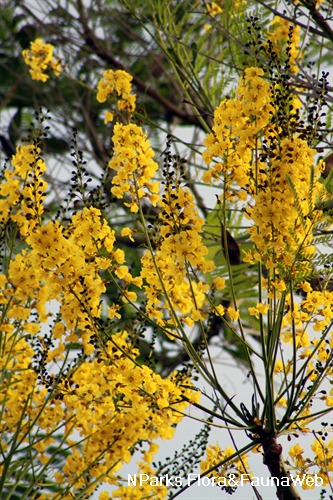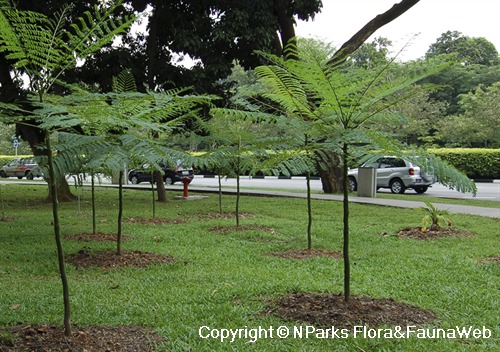
Back
Schizolobium parahyba (Vell.) S.F.Blake
| Family Name: | Fabaceae (Leguminosae) |
| Common Name: | Brazilian Fern Tree, Brazilian Fire-Tree, Tower Tree, Mexican Fern Tree, Yellow Jacaranda, Reach for the Sky, Guapuruvu |
Name
Classifications and Characteristics
| Plant Division | Angiosperms (Flowering Seed Plants) (Dicotyledon) |
|---|---|
| Plant Growth Form | Tree (Big (>30m), Medium (16m-30m)) |
| Lifespan (in Singapore) | Perennial |
| Mode of Nutrition | Autotrophic |
| Plant Shape | Tiered, Open |
| Maximum Height | 12 m to 35 m |
| Maximum Plant Spread / Crown Width | 5 m |
Biogeography
| Native Distribution | Tropical America |
|---|---|
| Native Habitat | Terrestrial (Primary Rainforest) |
| Preferred Climate Zone | Tropical |
| Local Conservation Status | Non-native |
Description and Ethnobotany
| Others - Plant Morphology | Deciduous tree, up to 35m in native rainforests. Typically non-branching and topped by distinctive fern tree-like crown when young. Mature trees assume sparse open crown in Singapore.Large pinnately-compound leaves, up to 1 m in length, said to be the largest compound leaves in plant kingdom, consisting of 15-20 pairs of elliptical leaflets (2-3 cm). Leaves are shed before flowering occurs. Flowers golden yellow, produced in racemes. Fruits flat, tear-drop explosive pods, 8-12 cm long, turn black and crack open when mature to release single oval flattened seed.Juvenile trees popularly used in Singapore for their attractive architectural form. Pioneer species used in reforestation, fast growing, thrives in well-drained soils. Easily grown from cuttings and seeds, though seeds require mechanical or chemical scarification to break dormancy. Wood prone to damage by insects. Mature trees said to be prone to branch breakage, and as a result planted away from roadsides and heavy traffic areas in other countries.Genus epithet 'Schizolobium' comes from Greek verb 'schizo' (divide) and 'lobion' (pod) because inner and outer layers of the pod separate when mature. Species epithet ‘parahyba’ named after the Parahyba River in Brazil.Note: Scientific name sometimes written as Schizolobium parahybum. But specific epithet is a noun (name of a Brazilian River), thus it retains its own gender and termination regardless of the gender of the genus epithet. |
|---|---|
| Ethnobotanical Uses | Others: Leaf extract used as antidote to snake venom. Seeds made into buttons and beads in South America. |
Landscaping Features
| Desirable Plant Features | Ornamental Flowers, Ornamental Foliage |
|---|---|
| Landscape Uses | General, Coastal |
Plant Care and Propagation
| Light Preference | Full Sun |
|---|---|
| Water Preference | Moderate Water |
| Plant Growth Rate | Fast |
| Rootzone Tolerance | Well-Drained Soils |
| Propagation Method | Seed, Stem Cutting |
| Propagule Establishment Remarks | Seeds require mechanical scarification or thermal shock to break dormancy. Seeds can be immersed in boiling water or chemicals such as acid and organic solvent or expose to fire. |
Foliar
| Foliage Retention | Deciduous |
|---|---|
| Mature Foliage Colour(s) | Green |
| Mature Foliage Texture(s) | Smooth |
| Foliar Type | Compound (Bipinnate) |
| Foliar Shape(s) | Non-Palm Foliage (Elliptical) |
| Foliar Venation | Pinnate / Net |
| Foliar Margin | Entire |
| Leaf Area Index (LAI) for Green Plot Ratio | 2.5 (Tree - Open Canopy) |
Non - Foliar and Storage
| Trunk Type (Non Palm) | Woody |
|---|
Floral (Angiosperm)
| Flower & Plant Sexuality | Bisexual Flowers |
| Flower Colour(s) | Yellow / Golden |
|---|---|
| Inflorescence Type | Raceme |
| Flowering Habit | Polycarpic |
Fruit, Seed and Spore
| Mature Fruit Colour(s) | Black |
|---|---|
| Fruit Type | Dehiscent Dry Fruit |
Image Repository
Others
| Master ID | 1824 |
|---|---|
| Species ID | 3117 |
| Flora Disclaimer | The information in this website has been compiled from reliable sources, such as reference works on medicinal plants. It is not a substitute for medical advice or treatment and NParks does not purport to provide any medical advice. Readers should always consult his/her physician before using or consuming a plant for medicinal purposes. |

